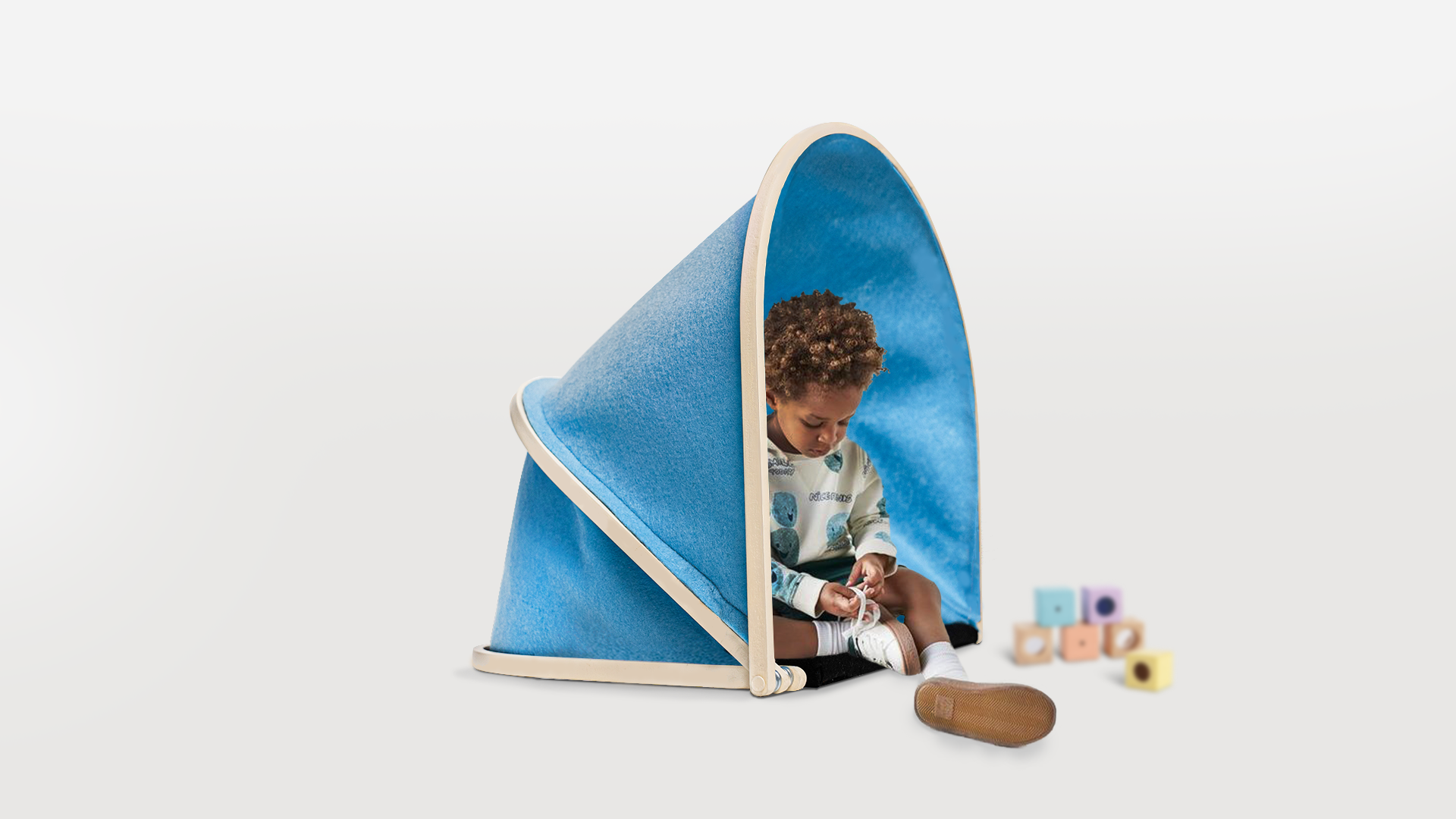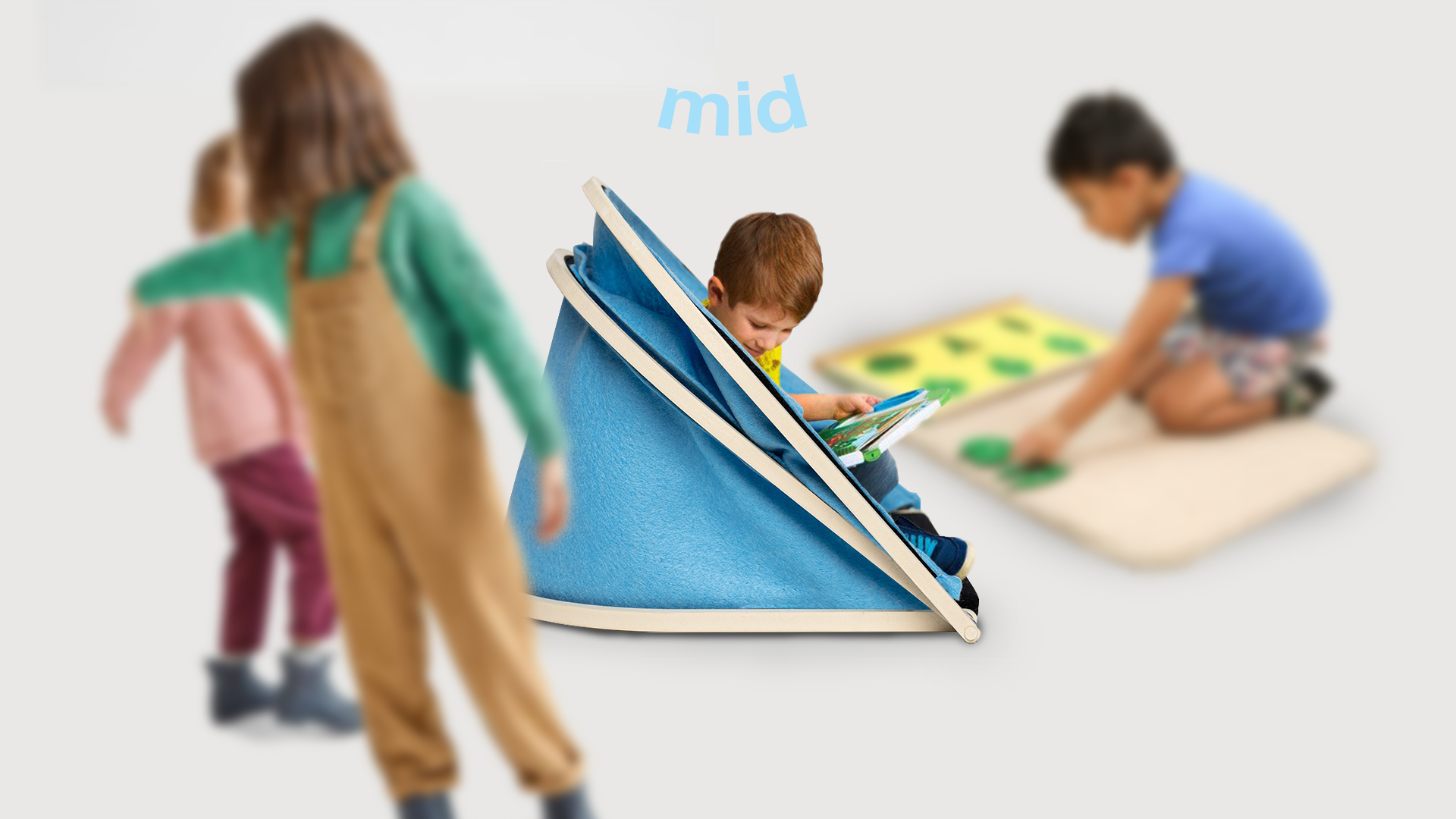
Children with ADHD are easily distracted, often act without thinking and can be very active. This group of children are vulnerable to developing learning difficulties at school, which can affect their overall progress and self-esteem. What protects young people from developing these problems is exposure to supportive and nurturing environments at home, at school and within other social contexts.
It is roughly estimated that children spend about 15,000 hours at school. Given this, it is not surprising that the nature and quality of the school environment plays a vital role in shaping children’s behavior.
By understanding that all children learn differently, the question of 'How can we better enable children?' is supplemented with 'How we can support them in recognizing their own learning needs?'.
This project investigates how sensory furniture can better enable children with different learning needs and styles, by providing them structured learning environments with as little distraction as possible.
COZI is a sensory mat with an adjustable partition that provides positive isolation for children seeking quietness in a busy classroom. Made from materials that assist in reducing light, touch and sound, Cozi helps to regulate the children’s experiences.
Coming into this project, I had great interest in pursuing a design that revolves around improving the lives of children. My background that involved primary school work aand work with young people, allowed me to channel that experience into a product that could better enable kids in classrooms.
In the early stages of the project, I aimed to break the stigma around children diagnosed with a behavioral disorder. I stumbled upon a conversation involving children’s interaction with the space in their classroom, and how that affects their growth, development and increases their learning ability. A product that will enable them to stay calm and focused in the classroom, without using stimulants and exclusive behavioral therapy, would be beneficial.
The number one aim and challenge the New Zealand educational system is facing, is achieving equity and excellence in student outcomes. Through this I identified a market opportunity for sensory furniture, providing an opportunity for an innovative product, and one that is affordable for high and low decile schools, to achieve educational equity.
My conversations with experts and professionals allowed me to grow a deeper understanding of children and the environmental context. The following questions made the design more cohesive and more human-centric, rather than assuming what the product could do:
- How would children use it?
- Do our current classrooms cater to the needs of all students?
- How does the design assist teachers?
- Should it be permanent in its place, or should it be movable and/or 'foldable'?
But the most influential insight I was given was the terminology of empowering children. How can we assist all kids in identifying what their learning style is? How can we provide that opportunity for them to recognize their own needs? This was incredibly important for me to understand, as it justifies why providing privacy or encouraging privacy in a classroom helps shape the learning outcomes of the child.
All these insights have led me to create a product that all children can use, to recognize their preferred learning style through positive isolation, when they need it. While mostly designed to assist children with ADHD, to self-regulate in a classroom environment, the design’s universal approach allows for all students to use it.




